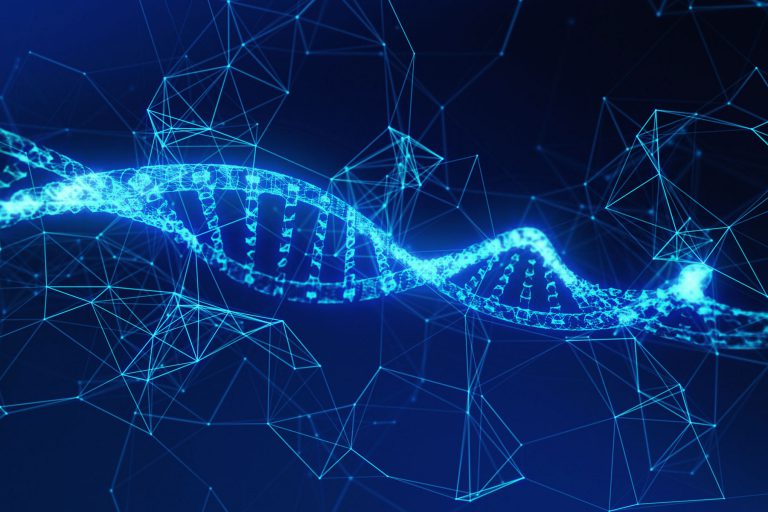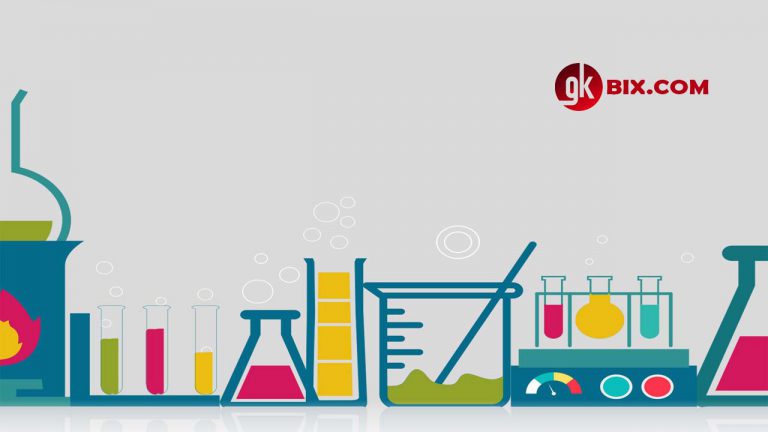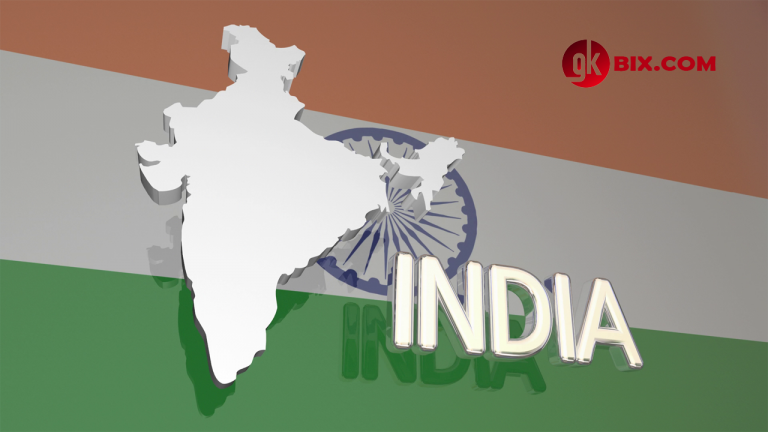[130+] Medicine General Knowledge question and answers 2024
Q1. Who is considered the father of neurology?
A. Paul Enrich
B. F.J.Gall
C. Pincus
D. Kolf
Ans. B
Q2. Who was the inventor of the kidney machine?
A. Willem Johan Kolff
B. Sertumer
C. Robert Koch
D. Einthoven
Ans. A
Q3. Who was the first to diagnose cancer?
A. Henry Swan
B. Edward Calvin
C. Hoffman
D. Robert Weinberg
Ans. D
Q4. Who was the person who discovered the typhoid vaccine?
A. Jenner
B. Ronald Ross
C. Sir Almorth
D. Salk
Ans. C
Q5. Who was the first to study the digestive system?
A. Geevan Bovlvo
B. Koch
C. James Lind
D. B and C
Ans. A
Q6. Which of these is an anti- cholesterol drug?
A. Saridon
B. Daonil
C. Lovastatin
D. Lisinopril
Ans. C
Q7. What is the medical term for low glucose levels in the blood ?
A. Hypeperglycaemia
B. Bulimia
C. Dyslipidemia
D. Hypoglycaemia
Ans. D
Q8. Which of these bodily organs can be affected by diabetes?
A. Heart
B. Eyes
C. Nerves
D. All of these
Ans. D
Q9. Gastroschisis is a condition where this organ is found outside the body cavity. Which is the organ?
A. Bowels
B. Kidney
C. Heart
D. Lung
Ans. B
Q10. Which of these royals died of the disease fistula, in which there is an abnormal channel into the skin of another organ?
A. Henry VIII
B. Louis IV
C. Henry V
D. Richard I
Ans. C
Q11. Which of these is a drug prescribed to TB patients?
A. Aureomycin
B. Terramycin
C. Streptomycin
D. Tetracycline
Ans. C
Q12. Who was ancient Greece’s most famous physician?
A. Susrutha
B. Archimdes
C. Hippocrates
D. Asclepius
Ans. C
Q13. Who was the Greek god of medicine?
A. Apollo
B. Asclepius
C. Panacea
D. Chiron
Ans. B
Q14. Who was the world’s first known physician, was an Egyptian?
A. Nefertiti
B. Imhotep
C. Galen
D. Charaka
Ans. B
Q15. Nowhere in the ancient world was surgery as sophisticated as in
A. Egypt
B. Greece
C. China
D. India
Ans. D
Q16. The Indian system of medicine, ‘Ayurveda’, began about how many years ago?
A. 2000
B. 2400
C. 3000
D. 4000
Ans.B
Q17. What is the Chinese medical system in which needles are inserted through the skin?
A. Reflexology
B. Shamanism
C. Acupuncture
D. Unani
Ans. C
Q18. Indian identifies how many chakras as centres for focusing and distributing the body’s spiritual power?
A. 4
B. 6
C. 8
D. 7
Ans. D
Q19. Which of these is called the ‘king of tonics’ in Chinese medicine?
A. Ginseng
B. Green Tea
C. Coca
D. Eucalyptus Decoction
Ans. A
Q20. Who began the science of physiology or how the body works, also believed that too much blood caused disease?
A. Galen
B. Imhotep
C. Erasistratus
D. Lysistratus
Ans. C
Q21. Anatomist, physician and theorist, he was Rome’s greatest medical figure. Who was he ?
A. Caius Plinty,The Elder
B. Cornelius Celsus
C. Claudius Galen
D. Asclepiads
Ans. C
Q22. Who believed in the concept of 4 humours of the body-blood, phlegm, yellow bile and black bile?
A. Asclepius
B. Galen
C. Hippocrates
D. Herophilos
Ans. C
Q23. Who was the author of De Re Medicina (On medicine)?
A. Galen
B. Hippocrates
C. Cornelius Celsus
D. Herophilos
Ans. C
Q24. The book, Historia Naturalis, was a text on surgery, herbs, magic and folklore. Who wrote it?
A. Caius Pliny The Elder
B. Galen
C. Hippocrates
D. Asclepius
Ans. A
Q25. In which place was the earliest false teeth made, 4000 years_ago?
A. China
B. Greece
C. Rome
D. Egypt
Ans. D
Q26. Which famous emperor introduced the idea of doctors on the battlefield?
A. Julius Caesar
B. Napoleon
C. Augustus Caesar
D. Alexander
Ans. A
Q27. More than 2000 years ago, which fish was used to provide the first electrotherapy?
A. Torpedo Fish
B. Jelly Fish
C. Squid
D. Carp
Ans. A
Q28. Who was the first physician to distinguish between smallpox and measles?
A. Nestorius
B. Rhazes
C. Avicenna
D. Pedanius Dioscorides
Ans. B
Q29. Which of these causes the disease scarlet fever?
A. Haemolytic streptococcal
B. Housefly
C. Mosquito
D. Flea
Ans. A
Q30. Which disease results from a lack of red blood cells?
A. Leukaemia
B. Anaemia
C. Bulima
D. Dyslipidaemia
Ans. B
Q31. Who was the Christian patron saint, invoked by those who suffered from eye ailments?
A. St. Lucy
B. St. Patrick
C. St. Theresa
D. St. Catherine
Ans. A
Q32. This English king was believed to have healing powers and thousands queued up to be touched by him between 1661 and 1665. Who was he?
A. Charles II
B. James I
C. Henry IV
D. Richard II
Ans. A
Q33. Which two famous healing saints and twin brothers were beheaded in 278 AD by emperor Diocletian for refusing to give up Christianity?
A. Damian & Juhus
B. Julius & Roman
C. Cosmos & Damian
D. Romus & Remulus
Ans. C
Q34. Who was the author of the first great work on anatomy, De Humani Corporis Fabrica (Fabric of the Human Body)?
A. Leonardo Da Vinci
B. Andreas Vesalius
C. Realdo Colombo
D. Andrea Cesalpino
Ans. B
Q35. Who among these was a pioneer in the use of minerals like sulphur, iron, lead and mercury, as drugs?
A. Galen
B. Colombo
C. Cesalpnio
D. Paracelsus
Ans. D
Q36. One of the earliest colleges to train and license physicians was London’s Royal College of physicians. It was established in
A. 1515
B. 1516
C. 1517
D. 1518
Ans. D
Q37. Who was the first great medical microscopist?
A. Antoni Van Leeuenhoek
B. Marcello Mapighi
C. William Harvey
D. James Blundell
Ans. B
Q38. Which doctor established the basis of modern clinical medicine?
A. Thomas Sydenham
B. William Harvey
C. John Hunter
D. Hermann Boerhaave
Ans. A
Q39. Which doctor devised the first obstetrical forceps in the late 16th century?
A. William Smellie
B. William Chamberlen
C. William Cheselden
D. William Hunter
Ans. B
Q40. Which famous surgeon’s collection of over 13,000 anatomical specimens, human and animal, is found at the Hunterian Museum of London’s Royal College of Surgeons?
A. John Hunter
B. William Hunter
C. Richard Hunter
D. James Hunter
Ans. A
Q41. This man devised percussion – tapping the chest or another body part and listening to the sounds – in Vienna in 1781. Who was he ?
A. John Floyer
B. Rene Laennec
C. Leopold Auenbrugger
D. Sanctorius
Ans. C
Q42. Proctoscope was an instrument for looking at which part of the body in ancient days?
A. Stomach
B. Lungs
C. Bladder
D. Recturn
Ans. D
Q43. To measure which of these was the sphygmomanometer used in earlier times?
A. Blood Sugar
B. Blood Pressure
C. Body Temperature
D. Urine Sugar
Ans. B
Q44. Who was Britain’s first woman doctor?
A. Elizabeth Robertson
B. Elizabeth Thomas
C. Elizabeth Garrett Anderson
D. Elizabeth Browning
Ans. C
Q45. In ancient days a spirometer was used to measure the vital capacity of the
A. Heart
B. Stomach
C. Kidney
D. Lungs
Ans. D
Q46. Who wrote ‘Cellular Pathology’ which led to scientific studies of pathology and showed that diseases can be diagnosed and explained at the cellular level?
A. Johannes Muller
B. Rudolf Virchow
C. Theodor Schwann
D. Jakob Henle
Ans. B
Q47. Haematology is the medical specialty concerned with the study of
A. Cells
B. Blood
C. Urine
D. Kidney
Ans. B
Q48. Which British neurologist invented the haemoglobinometer in 1875?
A. William Roberts
B. Edward Jenner
C. William Bowers
D. Willian Gowers
Ans. D
Q49. Who developed the germ theory of disease in which bacteria and other microbes are seen as causing diseases?
A. Louis Pasteur
B. Robert Koch
C. Emil Roux
D. Emil Von Behring
Ans. A
Q50. Who was the first to identify that particular microbes caused particular diseases?
A. Robert Koch
B. Ronald Ross
C. Louis Pasteur
D. Jonas Salk
Ans. A
Q51. Who devised vaccines against tetanus and diphtheria in 1890 and won the first Nobel prize for medicine in 1901?
A. Emil Roux
B. Emil Von Behring
C. Louis Pasteur
D. Jonas Salk
Ans. B
Q52. Who received the Nobel for medicine in 1905 and the Berlin’s Institute of Infectious Diseases was built in his honour?
A. Emil Von Behring
B. Robert Koch
C. Edward Jenner
D. Ronald Ross
Ans. B
Q53. In the 1930s, Ultraviolet therapy was used to prevent which disease caused by lack of sunlight?
A. Beri Beri
B. Gingivitis
C. Rickets
D. Leucoderma
Ans. C
Q54. Which common disease was known to Hippocrates as phthisis?
A. Common Cold
B. Influenza
C. Tuberculosis
D. Measles
Ans. C
Q55. In an enema, liquid is introduced into which part of the body?
A. Nose
B. Mouth
C. Ears
D. Recturm
Ans. D
Q56. Which was the first drug to be made in the laboratory specifically to treat the cause of a disease, in this case, syphilis?
A. Saivarsan
B. Penicillin
C. Terramycin
D. Erythromycin
Ans. A
Q57. Chemotherapy, the application of chemical techniques to drugs, was pioneered by
A. Howard Ftorey
B. Alexander Fleming
C. Charles Best
D. Paul Ehrlich
Ans. D
Q58. What year did Alexander Fleming discover penicillin?
A. 1926
B. 1928
C. 1927
D. 1929
Ans. B
Q59. Who received the Nobel prize for his work on immunology in 1908 ?
A. Alexander Fleming
B. Paul Ehrlich
C. Charles Best
D. Howard Florey
Ans. B
Q60. From which plant was the contraceptive pill developed in the 1950s?
A. Madagascar Periwinkle
B. Mexican Wild Yam
C. Liverwort
D. Butter cup
Ans. B
Q61. About one third of modern packaged medicines are still based on
A. Chemicals
B. Animals
C. Plants
D. Minerals
Ans. C
Q62. Bronchodilators are usually used to treat which condition ?
A. Hay Ferver
B. Asthma
C. Gout
D. Skin Rashes
Ans. B
Q63. Who discovered that animal insulin could replace missing human insulin?
A. Frecterick Banting
B. Charles Best
C. Richard Banting
D. a and b
Ans. D
Q64. Which system of medicine is based on the premise that ‘like cures like’?
A. Ayurveda
B. Naturopathy
C. Unani
D. Homoeopathy
Ans. D
Q65. Osteopathy, founded by Andrew Taylor Still, is a therapy based on the premise that good health depends on the soundness of the
A. Bones
B. Muscles
C. Spinal Column
D. Joints
Ans. C
Q66. Who is the founder of chiropractic, which is similar to osteopathy?
A. David Daniel Palmer
B. Robert Palmer
C. John Smith
D. Eunice Ingham
Ans. A
Q67. What is the medical term for an artificial external body part?
A. Parenthesis
B. Prosthesis
C. Catharsis
D. Asepsis
Ans. B
Q68. Who introduced the use of antiseptics, which prevented infection in wounds?
A. Horace Wells
B. Thomas Morton
C. Josepn Lister
D. William Macewen
Ans. C
Q69. Antisepsis kills germs by using chemicals. What is the process of preventing germs from getting into the wound by sterilizing objects called ?
A. Prosepsis
B. Non-Sepsis
C. Asepsis
D. Pepsi Sepsi
Ans. C
Q70. Who was a pioneer in asepsis?
A. Charles Mcburney
B. William MacEwen
C. Thomas Morton
D. Joseph Lister
Ans. B
Q71. Who was the first to perform open-heart surgery?
A. Daniel Hale Williams
B. Banting
C. Jenner
D. Lind
Ans. A
Q72. Which country was the first to use antibiotics for treating diseases?
A. France
B. England
C. Egypt
D. India
Ans. C
Q73. Which university in India allowed women to enrol as students in medical college for the first time ?
A. Chennai
B. Kerala
C. Calcutta
D. Pondicherry
Ans. A
Q74. Who was the first person to treat brain disease successfully ?
A. Dr. Barnard
B. Dr. Robertson
C. Dr. Carlie
D. Dr. Charlie
Ans. C
Q75. Which of these is used for treating cancer?
A. Uranium
B. Plutonium
C. Selenium
D. Radium
Ans. D
Q76. People who can see faces but cannot tell them apart are suffering from
A. Prosopagnosia
B. Amnesia
C. Insomnia
D. Sleep Apnea
Ans.A
Q77. Which of these is a blood thinning drug?
A. Paracetamol
B. Aspirin
C. Trental
D. Cetrizen
Ans. B
Q78. The process where infected dead tissue is cut off from the wound to prevent viable tissue dying from poor blood flow is called
A. Amputation
B. Debridement
C. Stenting
D. Angioplasty
Ans. B
Q79. Which nerve is known as the musician’s nerve?
A. Ultra Nerve
B. Hypoglossal Nerve
C. Trochlear Nerve
D. Oculomotor nerve
Ans. A
Q80. Which nerve is responsible for communication between the hand and the brain?
A. Radial Nerve
B. Femoral Nerve
C. Ulnear Nerve
D. Sciatic Nerve
Ans. C
Q81. The cell phone elbow is a modern day ailment but its medical term is
A. Carpal Tunnel Syndrome
B. Cubital Tunnel Syndrome
C. Asperger’s Syndrome
D. Ascher’s Syndrome
Ans. B
Q82. What is the medical condition where the heart becomes weakened, enlarged, and struggles to pump blood effectively?
A. Atherosoierosis
B. Angina
C. Endocarditis
D. Dilated Cardiomyopathy
Ans. D
Q83. Japanese encephalitis is a neurological viral infection spread by
A. Houseflies
B. Mosquitoes
C. Lice
D. Bedbugs
Ans. B
Q84. Trichotillomania is a compulsive disorder characterised by repetitive
A. Nail Biting
B. Chest Beating
C. Hair Pulling
D. Head Beating
Ans. C
Q85. A paediatrician is a doctor who has specialised in the branch of medicine pertaining to treatment of
A. Children
B. Old People
C. Diabetics
D. Heart Patients
Ans. A
Q86. A geriatrician is a doctor who has specialized in the treatment of diseases which affect
A. Sportspersons
B. People With Mental Problems
C. Old People
D. People with Kidney Problems
Ans. C
Q87. A doctor who has specialized in the microscopic study of disease processes in tissues is called a
A. Microbiologist
B. Histopathologist
C. Chiropodist
D. Podiatrist
Ans. B
Q88. A doctor who has specialized in the application of medical science to the investigation of certain forms of crime is called a
A. Gastroenterologist
B. Nephrologist
C. Forensic Pathologist
D. Endocrinologist
Ans. C
Q89. A test that involves using a stethoscope to listen to the sounds produced by the heart, lungs, blood flow, or fluid and gas in the abdomen is known as?
A. Auscultation
B. Palpitation
C. Biopsy
D. Audiometry
Ans.A
Q90. The process of taking a specimen of tissue from the body for microscopic examination to find out what is wrong is called
A. Angiography
B. Amniocentesis
C. Biopsy
D. Babinski’s Test
Ans. C
Q91. Direct optical examination of the inside of the colon using a viewing device inserted through the anus is called
A. Colonoscopy
B. Colposcopy
C. Cone Biopsy
D. Core Needle Biopsy
Ans. A
Q92. Which of these is a trade name for a multivitamin preparation?
A. Dabec
B. Caced
C. Baced
D. Abdec
Ans. D
Q93. Which of these is a penicillin – like antibiotic prescribed in treating typhoid and many other infections?
A. Aminophylline
B. Amoxicillin
C. Amoxapine
D. Amphetamine
Ans. B
Q94. Which of these is a central nervous system stimulating drug commonly abused to get a ‘high’?
A. Amitrip
B. Amethocaine
C. Amphetamine
D. Amikacin
Ans. C
Q95. Which of these is a commonly prescribed laxative for constipation?
A. Amytal
B. Disprin
C. Actifed
D. Dulcolax
Ans. D
Q96. Which of these is used in anti – ageing treatment to get rid of wrinkles?
A. Biovital
B. Botulinum Toxin
C. Brufen
D. Brevital
Ans. B
Q97. Loss of ability to perform even simple mathematical calculations is called
A. Dysleoxia
B. Alzheimer’s
C. Acalculia
D. Achalasia
Ans. C
Q98. A condition in which the world is perceived only in black and white is called
A. Achondroplasia
B. Achromatopsia
C. Achlorhydria
D. Dyslexia
Ans. B
Q99. Which disease is common in models, actresses and young women who are overly concerned with body weight ?
A. TB
B. Acne
C. Anorexia Nervosa
D. Anosmia
Ans. C
Q100. What is the medical term for hospital acquired infections?
A. Anoxia
B. Aniridia
C. Nosocomia
D. Agnosia
Ans. C
Q101. What is aphonia ?
A. Total or partial loss of Voice
B. Acquired Speech Disorder
C. Absence of lens of eye
D. Failure of development of an organ or tissue
Ans. A
Q102. What is arachnodactyly ?
A. Abnormally long spider-like hands & fingers
B. Pain in a joint
C. Worm Infestation
D. None of these
Ans. A
Q103. What is the medical term for a post mortem pathological examination to determine cause of death?
A. Biopsy
B. Autopsy
C. Atopy
D. Ataxia
Ans. B
Q104. What is ‘periorbital haematoma’ commonly known as?
A. Black Out
B. Blackheads
C. Black Eye
D. Birthmarks
Ans. C
Q105. Which procedure is generally advised in screening for breast cancer?
A. ECG
B. EEG
C. Ultrasound
D. Mammogram
Ans. D
Q106. Habitual grinding or clenching of teeth is known in medical parlance as
A. Brucellosis
B. Bruxism
C. Bruits
D. Bubo
Ans. B
Q107. In this syndrome, the patient believes an exact double has replaced someone close to them. What is the name of the syndrome?
A. Capgras’ Syndrome
B. Carcinoid Syndrome
C. Asperger’s Syndrome
D. Carpal tunnel Syndrome
Ans. A
Q108. Who was the inventor of CPR or cardiopulmonary resuscitation?
A. Dr. John Safar
B. Dr. Peter Safar
C. Dr. John Miller
D. George Miller
Ans. B
Q109. Who in the 1960s was the Polish chemist who first developed the oral contraceptive pill?
A. Frank B. Colton
B. Sam Colton
C. Stanley Kowaleski
D. Wojciech Kowalewski
Ans. A
Q110. Who invented the DNA cloning technique?
A. Stanley Cohen
B. Robert Cohen
C. Herberl Boyer
D. C and A
Ans. D
Q111. which is the worl’s most widely prescribed antidepressant?
A. Prozac
B. Aspirin
C. Saridon
D. Anxiolytic
Ans. A
Q112. Who invented Viagra, the drug which reverses erectile dysfunction in men, in 1991?
A. Peter Dunn
B. Albert Wood
C. William Wood
D. A and B
Ans. D
Q113. Who was chosen by US president as the US Surgeon General?
A. Dr. Sandeep Gupta
B. Dr. Sanjay Singh
C. Dr. Sanjay jain
D. Dr. Sanjay Sharma
Ans. B
Q114. Where did Dr. Christiaan Barnard perform the first human to human heart transplant in 1967?
A. Cape Town, South Africa
B. Johannnesburg
C. Natal
D. Kenya
Ans. A
Q115. In which year was a baby girl born from the first ever full ovary transplant?
A. 2005
B. 2007
C. 2006
D. 2008
Ans. D
Q116. Who was awarded the Nobel Prize in Medicine in 2009?
A. Elizabeth H. Blackburn
B. Carol W. Gereider
C. Jack W. Szostak
D. All of these
Ans. D
Q117. Who won the Nobel for medicine in 2008 for his discovery of the human papilloma viruses causing cervical cancer?
A. Harald Zur Hausen
B. Francoise Barre-Sinoussi
C. Luc Montagmer
D. Robert G.Edwards
Ans. A
Q118. Who won the Nobel for discovery of the human immunodeficiency virus?
A. Francose Barre – Sinoussi
B. Luc Montagnier
C. a and b
D. Robert Edwards
Ans. C
Q119. Who invented the first artificial heart?
A. William J.Kolff
B. Robert Jarvik
C. John Hopps
D. Wilson Greatbatch
Ans. A
Q120. Who invented the first cardiac pacemaker (but it was too large to be implanted)?
A. William J.Kolff
B. John Hopps
C. Robert Jarvik
D. Willem Einthoven
Ans. B
Q121. Who performed the first invitro-fertilization procedure (on Lesley Brown) on November 10, 1977?
A. Dr. Patrick Steptoe
B. Dr. Robert Edwards
C. Dr. Stacey John
D. A and B
Ans. D
Q122. DPT vaccination immunizes us against
A. Diphtheria, Pneumonia & TB
B. Diphtheria, Pneumonia & Tetanus
C. Dengue Pneumonia & Tetanus
D. Diptheria,Pertussis & Tetanus
Ans. D
Q123. Diseases which are spread by objects like spoons, cups, etc are called
A. Vector Borne Diseases
B. Airbone Diseases
C. Fomite Borne Diseases
D. Water Borne Diseases
Ans. C
Q124. Hepatitis is a disease which affects the
A. Heart
B. Gall Bladder
C. Pancreas
D. Liver
Ans. D
Q125. Which disease can be cured by bacteriophages?
A. Tetanus
B. Typhoid
C. Dysentery
D. Malaria
Ans. B
Q126. Quinine is used in the treatment of which disease?
A. Filariasis
B. Malaria
C. Psoriasis
D. Yellow Fever
Ans. B
Q127. Coryza is a widely prevalent ailment during the winter season. What is its common name?
A. Sore Throat
B. Allergy
C. Common Cold
D. Cough
Ans. C
Q128. What is the main symptom of diabetes insipidus?
A. Excessive Urine
B. Wait Loss
C. Tremors
D. Nausea
Ans. A
Q129. What is the common name of the condition called diplopia ?
A. Squint
B. Double Vision
C. Colour Blindness
D. Night Blidness
Ans. B
Q130. Who is recognized as the Father of Psychoanalysis?
A. Sigmund Freud
B. Alfred Adler
C. Carl Jung
D. Melanie Klein
Ans. A
Q131. Who wrote ‘The Interpretation of Dreams’?
A. Jung
B. Freud
C. Reich
D. Adler
Ans. B
Q132. In which year was the first psychological laboratory opened by Wilhelm Wundt?
A. 1878
B. 1879
C. 1867
D. 1877
Ans. B
Q133. The psychodynamic perspective emerged from the psychoanalytic work of?
A. Jung
B. Freud
C. William James
D. Carl Rogers
Ans. B
Q134. Humanistic psychology developed from the person-centred therapy of
A. Carl Rogers
B. Adler
C. Melanie Klein
D. Reich
Ans. A
Q135. What is the scientific study of human happiness and well being called?
A. Altruism
B. Positivism
C. Positive Psychology
D. Pessimism
Ans. C
Q136. Who established the field of positive psychology?
A. Martin Seligman
B. Melanie Klein
C. Anna Freud
D. Laing
Ans. A
Q137. The ‘talking cure’ in psychology was a feature of which psychoanalyst?
A. Jung
B. James
C. Seligman
D. Freud
Ans. D
Q138. What is the name of Freud’s patient who coined the term ‘talking cure’ for the dialogue between patient and psychoanalyst?
A. Anne
B. Anna O
C. Mary
D. Jane
Ans. B
Q139. Who is the author of the book, ‘Principles of Psychology’?
A. Melanie Klein
B. William James
C. Henry James
D. Carl Roger
Ans. B
Q140. Which son remarked, “It was ironic that my father gained fame as a family psychiatrist while having no involvement with his own family”?
A. Freud
B. R. D. Laing
C. Jung
D. Heinz Kohut
Ans. B









